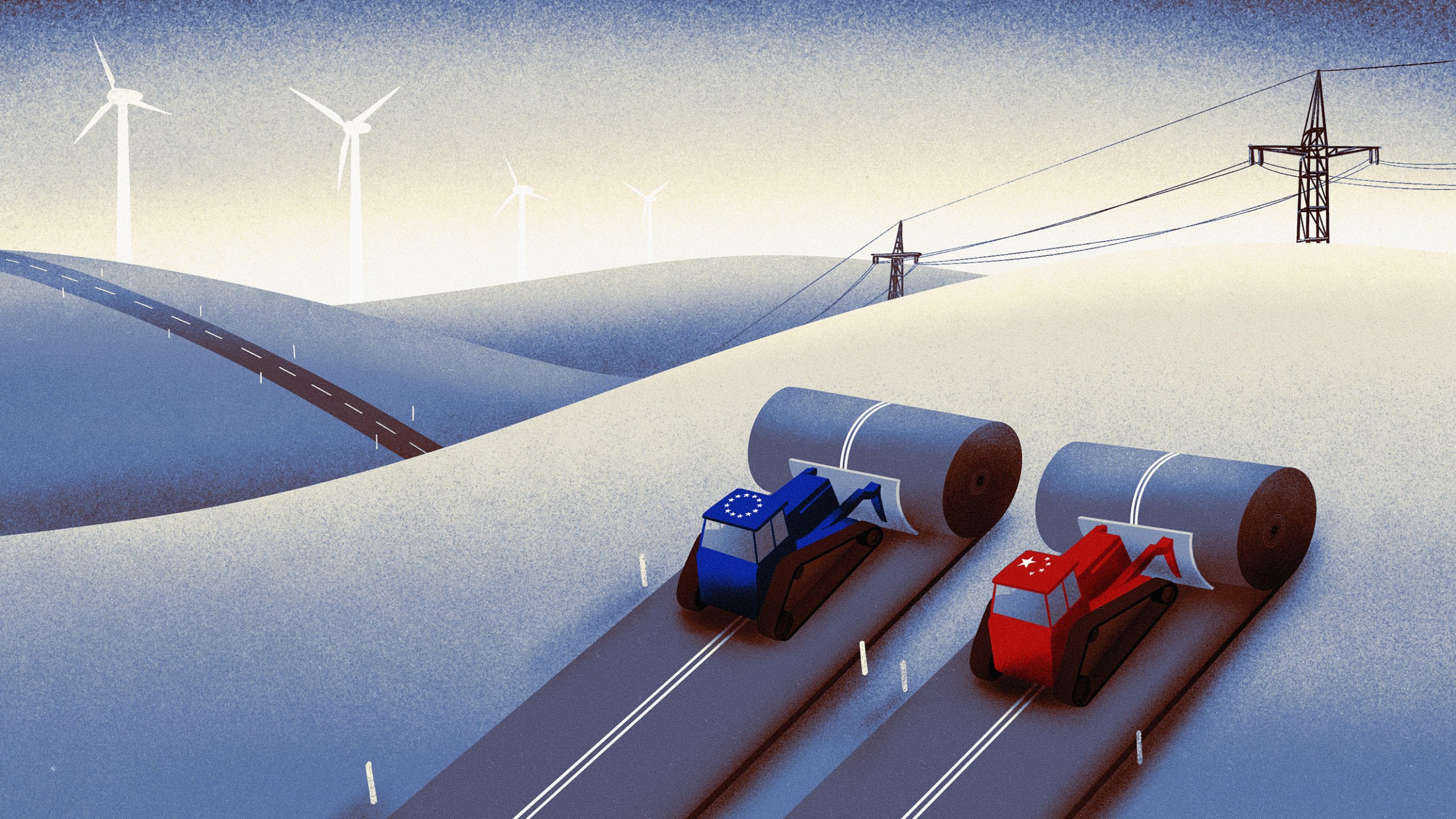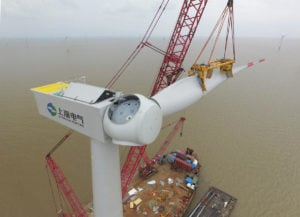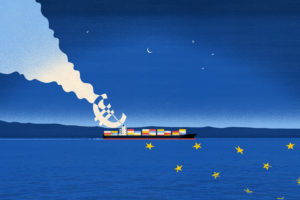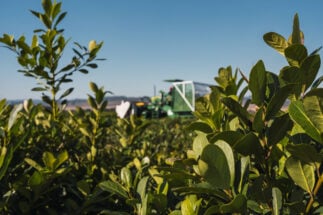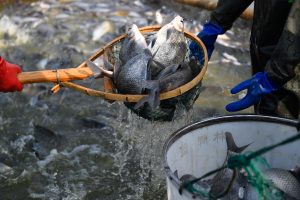The EU–African Union Summit, held in Brussels in February, brought together EU leaders and 40 African heads of state, and was billed as a “reset” of relations after years of poor strategic thinking by the EU. In contrast, China has secured infrastructure projects and boosted its trade across the continent through its Belt and Road Initiative (BRI). EU Commission President Ursula von der Leyen summed up the EU’s hopes by telling reporters at the summit that “the European Union wants to be Africa’s partner of choice.”
China and the EU after the pandemic
Read more from this series, in which we compare the post-Covid policies of China and the European Union, and how their relationship is evolving
The catch is that the EU wants the trade partnership to be based on its Green Deal policy, which means that deals done to address Africa’s infrastructure needs have to adhere to high social and environmental standards. The European Commission said in a statement: “[The] global need for infrastructure not only holds the key for sustainable development across the world but is a crucial part of the puzzle for fighting climate change and protecting the environment, improving global health security and boosting the competitiveness of the world economy.”
The EU’s policy ambition is not limited to Africa. EU leaders have understood that to meet the challenge presented by China’s BRI, their strategy must be global. The EU’s answer is the Global Gateway, launched in December 2021 to bring a coordinated approach to all its ongoing foreign development, environmental and trade efforts, while linking up with similar initiatives by other countries, such as the US-led Build Back Better World (B3W) and the UK’s Clean Green Initiative.
Global Gateway is fully aligned with the UN’s 2030 Agenda and its Sustainable Development Goals, and the 2015 Paris Agreement, and comes with a projected budget of 300 billion euros (US$327 billion) between 2021 and 2027.
A ‘high-quality’ offer
The need for such joined-up thinking was brought into sharp relief by the Covid pandemic and by the EU’s stuttering response to the logistical challenge involved in delivering medicines. The pandemic has thus generated a call for action, with securing suitable investment as the first step. The Global Infrastructure Hub, a G20 initiative, estimates a global investment infrastructure deficit of $15 trillion by 2040. Coupled with this need for infrastructure is the need to address environmental degradation and meet climate change targets, which add another $1.5 trillion every year.
The EU, US and China all have the technology and finance to be able to help developing countries upgrade their economies, and to accelerate growth and trade opportunities. The EU sees itself as “a trusted partner” able to make developing countries a positive offer, with “attractive investment and business-friendly trading conditions, regulatory convergence, standardisation, supply chain integration and financial services”. The EU wants to design projects that are “sustainable and of high quality, and implemented with high levels of transparency and standards in order to deliver lasting social and economic benefits for local communities.”
The Global Gateway will provide that positive offer, the Commission says. With a focus on the need for a renewal in physical infrastructure, such as fibre optic cables, clean transport corridors and clean power transmission lines to strengthen digital, transport and energy networks, the EU plans “to work with host countries, financial institutions and the private sector to scale up infrastructure investment to boost our competitiveness, deliver benefits and protections for our partners, empower local communities and tackle today’s most pressing global challenges – from climate change and sustainable development to health security, gender equality and education systems.”
Many countries do still want fossil fuel-based energy. That’s not a China problem, that’s a problem of international law and negotiations at the UNFCCC level
The EU also declares its aim “to forge links and not create dependencies” – a reference to how financial aid and subsidies have historically come with political trade-offs. China in particular has been accused of putting developing countries into “debt traps” by offering unsustainable loans for BRI projects, which can then be leveraged for political influence or concessions of geostrategic value to China. This contested theory has, however, been debunked, repeatedly, by numerous analysts.
Criticisms have also been levelled at the BRI for its record on and risks to environmental and social sustainability. However, such charges are increasingly wide of the mark, said Patrick Anam, trade policy analyst at Development Reimagined, a think tank based in Beijing. As he told China Dialogue: “The BRI projects that are being undertaken by China have recently been given an emphasis on social and environmental sustainability.” He pointed to China issuing the “Green development guidelines for overseas investment and cooperation”, which he described as a standards document that “specifically advises investors and lenders to rely on international environmental standards when host-country norms are less stringent than China’s domestic regulations”.
Many countries where these projects are being undertaken, Anam said, already have environmental laws and sustainability policies, meaning that any project undertaken in these territories under the BRI is subject to the host country’s environmental governance regimes. “China’s policy of non-conditionality means that it won’t impose its own social and environmental standards on its trade partners, if they have their own laws,” he added.
The problem, Anam said, has been that many countries don’t have environmental standards. “Many countries do still want fossil fuel-based energy. That’s not a China problem, that’s a problem of international law and negotiations at the UNFCCC level. It is our view that China’s BRI has so far delivered the highest social and environmental standards, within its conditionality constraints.”
Address Africa’s priorities
Whether the EU can achieve its ambition of creating Green Deal-based trade partnerships remains to be seen. Lea Pilsner, policy adviser at the Brussels office of E3G, an environmental think tank, suggested the policy needs a more solid financial underpinning. “The 150 billion euros [$164 billion] investment package earmarked [by the EU] for Africa over the next five years is not sufficient to match the estimated $100 billion per year needed,” Pilsner told China Dialogue, but pointed out that the Global Gateway was never intended to single-handedly plug that gap.
By comparison, Pilsner said, China has spent $450 billion globally in the past six years in financial investments and contracts through the BRI, and almost $60 billion last year, while the plans for B3W remain unclear. Where the Global Gateway hopes to differentiate itself from the BRI is with a principled approach around democratic values, good governance, equal partnership, green and clean technology. She said: “The EU’s emphasis on the quality of investment as its ‘unique selling point’ matters.”
However, the problem with setting such ‘principled’ conditions to financial agreements is that developing countries are no longer simply client states that can be saddled with debts to finance infrastructure projects in return for political favours. As the Brussels summit showed, African leaders are now much more confident in asserting their own vision for their countries and can be expected to be much tougher in negotiations. For example, green policies will remain a delicate issue. President Macky Sall of Senegal, speaking at the summit as the chair of the African Union, affirmed the commitment of African countries to the Paris Climate Agreement, but said that this could not happen at the expense of Africa’s need to develop gas as a source of energy. He said: “The continent needs to make use of its natural resources and expects a very precise form of solidarity from Europe. That is why we are for the maintenance of financing of the gas industry and hydrocarbons for a fair and equitable energy transition that takes account of the needs of the continent.”
The problem with insisting on green policies is that they can be seen by host countries as a request for compliance with rules that they did not formulate. Even if, as Pilsner said, the summit can be hailed as a success for changing European approaches and tone, and for putting the EU–Africa relationship on an equal footing, it looks as if the EU will need some deft negotiating strategies to reconcile their policy wishes with those of their African partners.
The real test for the EU, Pilsner said, will be whether it can engage with African stakeholders in the design of the package to deliver on African-defined priorities: “It is the EU commitment to the quality of engagement – beyond the ‘principles’ approach to investment – that will be telling of its success.”
Negotiating partnerships is one thing but, “to even have a chance of raising standards, the EU needs to work on the basic conditions to unleash its clean economy power for the benefit of third countries,” Pilsner said. In other words, the EU must ensure that high standards actually benefit the beneficiary country, its development and its people, and not let them become “pawns in the global race to ‘win’ the clean economy transition, economically and geopolitically”. If the EU can successfully negotiate these issues, Africa may well want to be the EU’s partner of choice.
